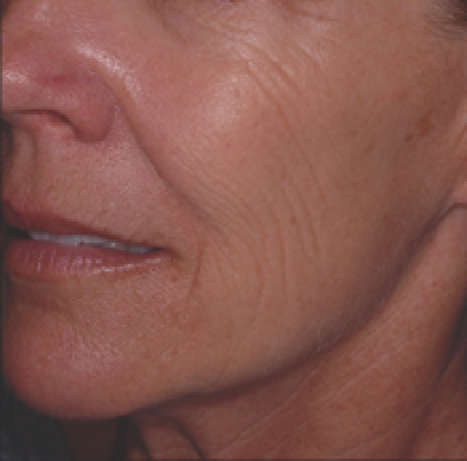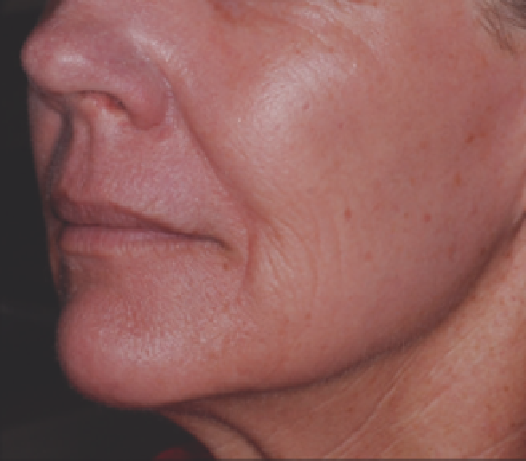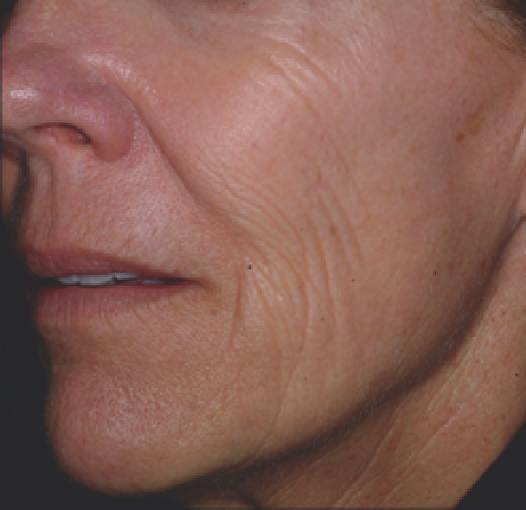Biomedical Engineering Reference
In-Depth Information
(
A
)
(
B
)
(
C
)
Figure 7.9
(
A
) Before and (
B
) 3 months after one treatment (fractional carbon dioxide) 30% coverage, 800-
μ
m depth; (
C
) note relapse in wrinkles after 1 year.
Acne Scarring
Acne scarring presents a challenge to the dermatologic sur-
geon. There are a wide variety of scar morphologies, some
being more amenable to ablative treatment than others (26).
Large rolling types of scars require interventions in addition to
fractional lasers—subcision, fi llers, autologous transplanted
fi broblasts, and neurotoxins can augment the laser's effects
(26). We have found that small box car scars and even some ice
pick scars respond well to ablative fractional lasers. The micro-
injury depth required for optimal scar effacement is unknown.
Conventional wisdom teaches that low density (<30%) and
high depths (>500
has corroborated this principle. The CROSS trichloroacetic
acid (TCA) technique can be used in conjunction with ablative
fractional lasers for focal ice pick scars. For optimal results, the
TCA is applied very precisely fi rst and allowed to “set” prior to
laser. If the TCA is applied after the laser procedure, localiza-
tion of the scar can prove diffi cult secondary to edema; more-
over, the acid tends to leech into the surrounding damaged
oozing skin. We have also combined nonfractional lasers in the
same session, effacing individual boxcar scars with a small spot
(1-2 mm) Er:YAG laser just prior to full-face fractional
treatment. In our most commonly applied sequence for box-
car scars, we apply the Er laser for individual scars followed
by CO
2
fractional treatment at about 25-30 mJ and 10%
m) would be best to reverse the histology
associated with acne scarring. However, no controlled study
μ


















